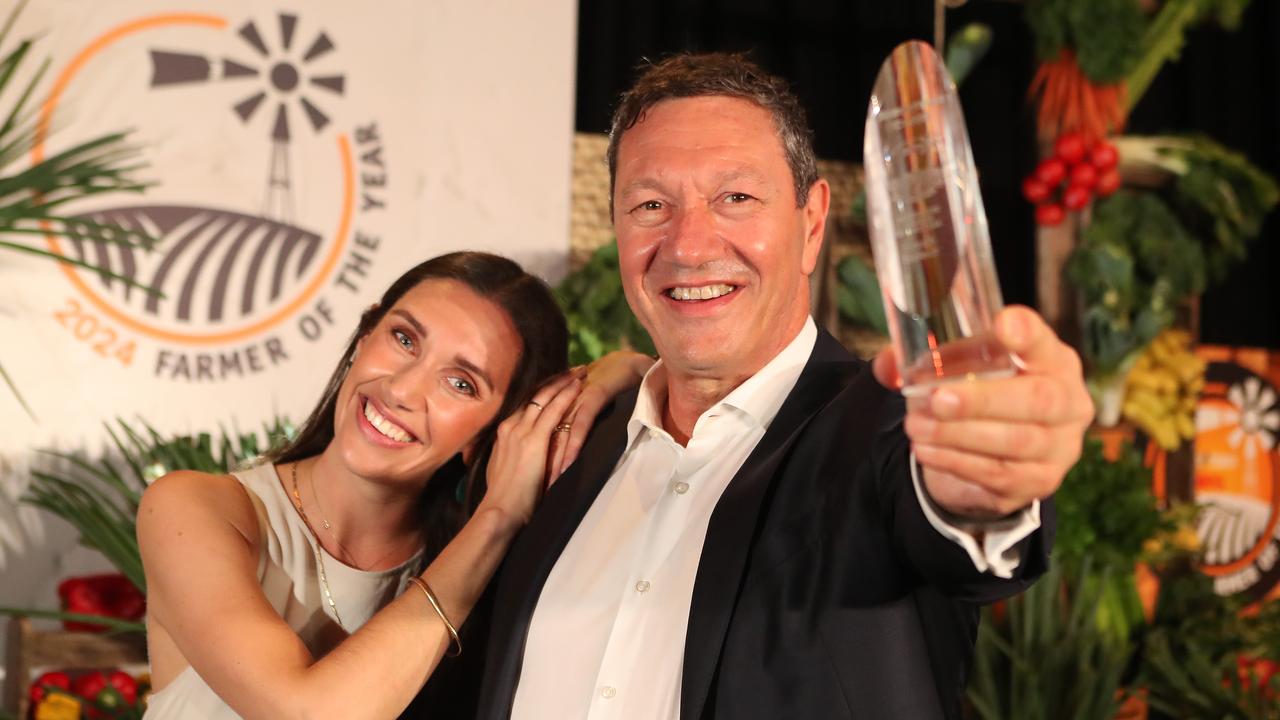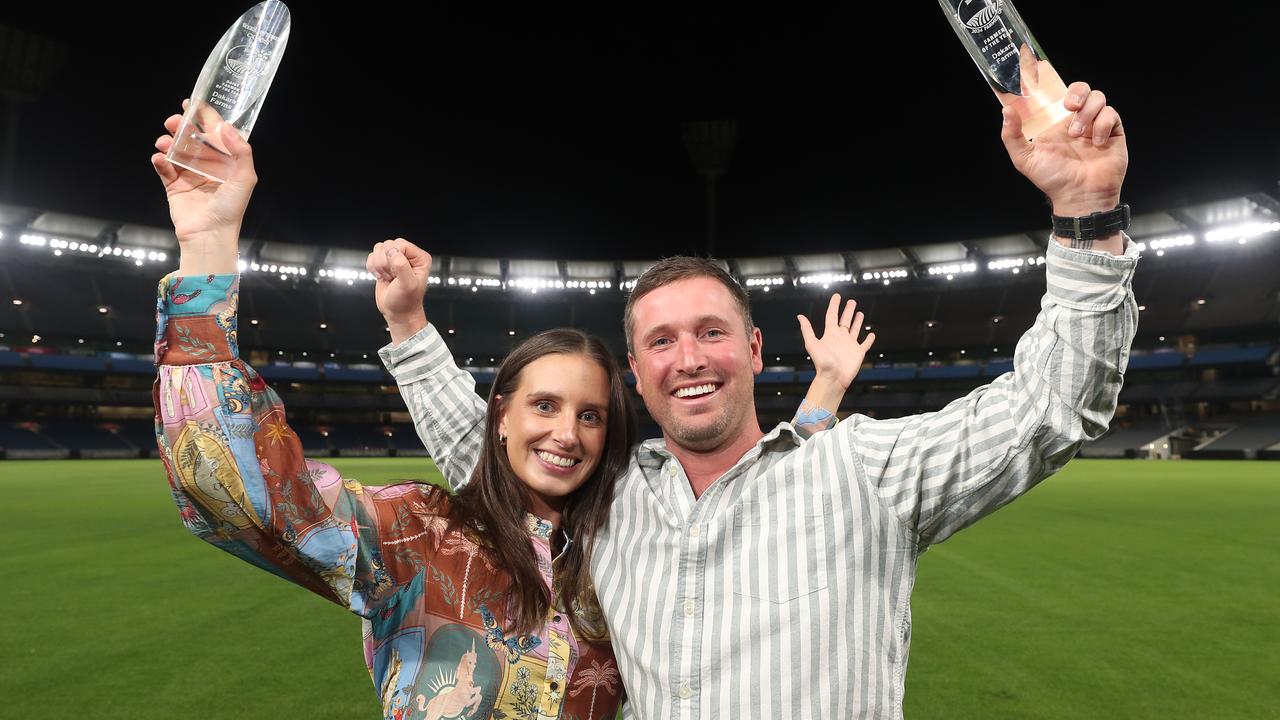Smart Group: Smart family from Keith farm for the future
THIS South Australian farming family puts its brain to good use, writes JAMES WAGSTAFF.

GOOD farmers act with their head and not their heart. Smart farmers also seek outside help and open their books up to independent scrutiny.
At Keith, in South Australia’s South East, innovative brothers Damien and Ryan Smart are certainly living up to their surname.
Their dynamic winter cropping, lucerne seed and livestock business, Smart Group — which was founded by their parents Brendon and Robyn more than 40 years ago — has grown to cover more than 5000ha in three districts and employ four full-time and two casual staff, as well as additional labour during harvest.
The business operates along corporate lines with a board of directors introduced by Brendon 20 years ago to take the emotion out of decisions and to “put a few more checks in place to make sure we were doing as good a job as we could”.
The board comprises an external chairman, part-time chief executive and two independent directors, in addition to Brendon, Damien and Ryan who are all Nuffield scholars.
“We open our books so it’s a load off our minds and they help with our decision making,” Damien said.
“They bring a lot of things to the table, they are not all farmers — bringing a wealth of knowledge from the business and the corporate world.”
A business management group made up of Brendon, Damien, and Ryan, as well as the chief executive, meets once a month to go through finance, marketing and production aspects of the business. It then tables a report for the board, which meets three times a year. The Smarts’ banker is invited to every meeting.
“It’s a fairly unique way of doing things but it works well for us,” Damien said.
YOUNG GUNS
PREVIOUSLY lucerne seed accounted for 50-60 per cent of income, a figure the business “wasn’t comfortable with”.
Through strategic purchase of farmland the Smarts have lifted their winter cropping and fodder enterprises and increased stocking numbers to a more balanced split between winter crops, hay (including lucerne hay), livestock and irrigated lucerne.
From an area perspective, there are 2000ha of winter crops — including 520ha of wheat as well as faba beans, barley, canola and lentils — 700ha of irrigated lucerne seed (under a mixture of pivots and flood), 300ha of export oaten hay and a further 800-1000ha of pasture/feed crops planted each year.
In addition, they run 6000 self-replacing Merino ewes, with a portion joined to White Suffolk rams to produce prime lambs.
There’s also a herd of 150 Angus beef cows, whose calves are either sold as weaners or fattened on grain and hay. Livestock are also traded as opportunity and markets permit.
Damien said the mix had served them well and while some years “we’d like to have more lucerne” due to its good gross margins, the spread has reduced risk.

RAIN MAKER
THE Smart country receives about 500mm of rain annually.
Damien said, after about a decade of dry springs, the past two seasons had reverted to a traditional winter-spring rainfall pattern.
“I’m not a meteorologist but the last couple of years just seems like it is getting back to normal,” Damien said.
“But we have that spread (of enterprises) and fodder has always been a good one because we grow a lot of biomass here. While a dry spring limits grain yields it doesn’t really affect fodder yields. We also have the ability to irrigate crops.”
Wheat is the biggest winter crop but the Smarts also grow a lot of barley, beans and lentils, and to a lesser extent canola (which is gradually being replaced by hay).
The bulk of cropping is conducted on a property 20km from the home farm. There, the recent rotation has been two years of wheat, followed by a legume while the home farm works on two years of cereal crops, followed by a legume and then canola or hay.
All cropping areas can support a wide range of crops so the rotations can continually change to target the greatest gross margins.
A factor easily measured as the Smarts have over 20 years of gross margin data collected by the Paddock Action Manager program. Currently all full-time employees have the cloud-based app on their smartphones so data can be collected and updated on the go and accessed by all at anytime.
Depending on the season, the aim is to have all the crops planted by the end of May. For the past 30 years, the Smarts have operated under minimum-till practices.
Damien said crops were sown at “pretty conservative” seeding rates of 80kg/ha for wheat and 70kg/ha for barley, sown with 80kg/ha of MAP fertiliser.
Follow-up applications are then governed by NDVI data collected via drone technology. The drone also carries a thermal camera, multi-spectrum camera and a HD camera. It is used to monitor all crops but more specifically to ascertain pest pressure and moisture stress in the irrigated lucerne.
HARVEST BOUNTY
HARVEST starts with windrowing of canola at the start of November and, depending on the season, can run through as late as mid-January.
The Smarts have a John Deere S680, which “on a good even wheat crop” harvests about 60 tonnes an hour.
They are currently budgeting on yields of 5.5 tonnes/ha for wheat “and probably expecting a bit more”. Last year — “an incredible year” — wheat yielded 7.2 tonnes/ha over 450ha with 45ha of feed wheat returning 9.5 tonnes/ha.
The Smarts have this year budgeted for a 3.5 tonnes/ha faba bean crop and four tonnes/ha of barley. Hay is expected to average eight tonnes/ha.
“This year was looking better than last year but we just haven’t quite had the rain in September and October that we did last year,” Damien said, adding that barley generally achieved malting grades and wheat H2.
The Smarts have about 5000 tonnes of on-farm grain storage and around 6000 of hay storage, giving them the flexibility to employ a range of marketing options.
With grain, their marketing strategy depends more on deciles, with trigger points according to prices, production and quality.

HAY THERE
THE Smarts get one cut of hay off their irrigated lucerne before the crop is locked up for seed production. Once it is harvested, the lucerne seed is cleaned at Bordertown.
A portion is contracted to a US export company and the remainder is a public variety exported to “wherever the market is” including Saudi Arabia and Argentina.
After harvest the irrigated lucerne stubbles are left for the ewes to lamb on “which give them a good kick start”.
The Smarts’ Merino flock is based on Kelvale Poll bloodlines joined early December for a May lambing.
It is the Smarts’ aim to have all lambs off the farm by December, with most sold over the hooks to Bordertown.
The Merino flock is shorn at six-monthly intervals, a practice Damien said was costly but effective, leading to an increase in wool production and improved animal health.
The sheep produce 3.5-4kg of 20-21-micron wool every six months. Damien said while sheep had always been important, good returns for meat and wool meant “they’re really paying their way at the moment”.


